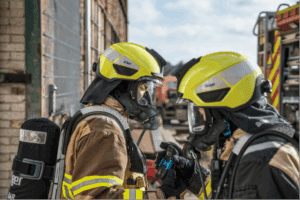Members of the Euralarm Fire Section are disappointed that the European Commission’s CPR proposal fails to address the market needs and does not address the main challenge facing standardisation. Nevertheless, Euralarm will continue to contribute to provide feedback to the current public consultation expecting a more practical proposal.
Since 1970, Euralarm has worked hard to represent the interests of the electronic fire safety industry in the areas of standardisation development and legislation. This resulted in robust standards to ensure that buildings are reliably monitored for fire threats, and occupants can be protected through automated notification, evacuation, and suppression systems. These standards address the performance of the individual products, as well as their mutual compatibility when combined to form systems. It is a combination of these standards with application standards which leads to functional and purpose-built solutions.
The safety critical products provided by Euralarm members are the foundation for reliable systems which are deployed according to robust installation codes in member states. These codes establish the best practise for the provision of such systems while allowing for sensible (and transparent) variations and deviations where appropriate. The biggest threat to the continuing success of this well-established order is that much needed revisions and extensions of the product standards underpinning the system are being hampered by the legalities of the CPR and the procrastinations by the European Commission.
Although Euralarm welcomes the publication of the proposal for a new CPR and the recent Q&A session which provided an opportunity to clarify the understanding, our members are disappointed that the proposal fails to address the urgent need to resolve the ongoing stagnation of the standardisation process.
European standardisation process
Standards for individual fire safety products such as smoke detectors fall under the CPR. The performance characteristics of these products are, to a large extent, identical across all of Europe, thereby encouraging free trade of them across the region. A system compatibility standard outlines which products belong to which system, while the design, installation, commissioning, and maintenance of a fire safety system are achieved through national standards. These standards focus on the overall function in alignment with national and/or regional regulations. This arrangement has been developed over many years and has met the needs of stakeholders across the continent. The application standards would be meaningless without robust product standards.
The drafted CPR shows that it is not possible to solve the current issues easily as the legal boundaries haven’t changed. Harmonised standards remain legally controlled documents according to the Commission’s interpretation of the European Court of Justice ruling and the new CPR does not provide any means to solve this.
It would mean that the fire safety industry has to re-write all product standards to align with what the European Commission is requesting. Consequently, the system standard and all the national application standards would have to be re-written. We estimate the time span for such an undertaking to be at best 10 years. This would not be an effective use of resources and would certainly be met with significant resistance because of the unnecessary confusion and inconsistencies of such a transition.
Assertions that the changes proposed amount to a simplification and should reduce costs and timescales for publishing standards are therefore unsubstantiated. Euralarm members anticipate increased costs, complexity and timescales.
To read more exclusive features and latest news please see our June issue here.
Media contact
Rebecca Morpeth Spayne,
Editor, International Fire Buyer
Tel: +44 (0) 1622 823 922
Email: [email protected]




































